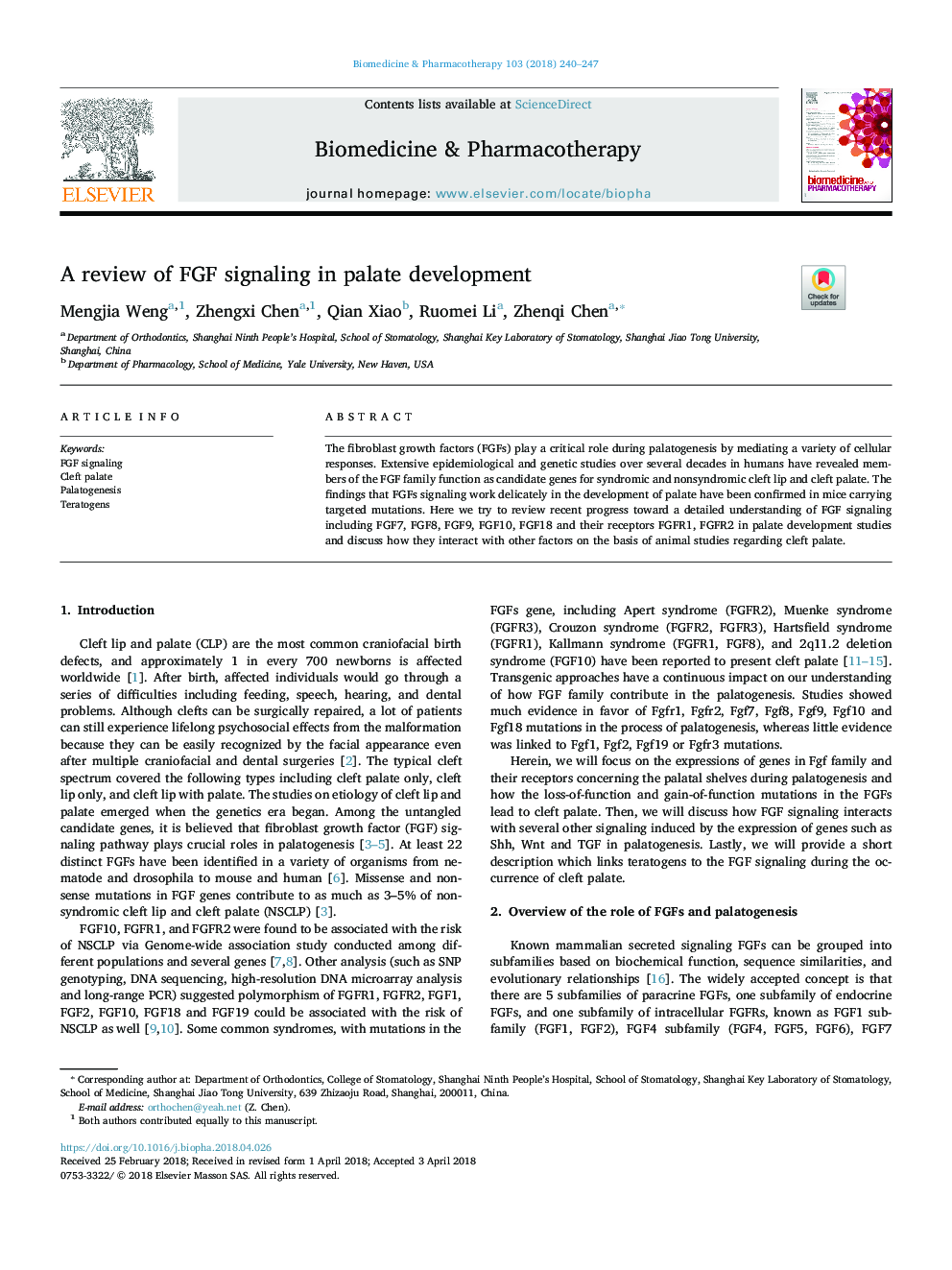| Article ID | Journal | Published Year | Pages | File Type |
|---|---|---|---|---|
| 8524763 | Biomedicine & Pharmacotherapy | 2018 | 8 Pages |
Abstract
The fibroblast growth factors (FGFs) play a critical role during palatogenesis by mediating a variety of cellular responses. Extensive epidemiological and genetic studies over several decades in humans have revealed members of the FGF family function as candidate genes for syndromic and nonsyndromic cleft lip and cleft palate. The findings that FGFs signaling work delicately in the development of palate have been confirmed in mice carrying targeted mutations. Here we try to review recent progress toward a detailed understanding of FGF signaling including FGF7, FGF8, FGF9, FGF10, FGF18 and their receptors FGFR1, FGFR2 in palate development studies and discuss how they interact with other factors on the basis of animal studies regarding cleft palate.
Related Topics
Health Sciences
Medicine and Dentistry
Oncology
Authors
Mengjia Weng, Zhengxi Chen, Qian Xiao, Ruomei Li, Zhenqi Chen,
